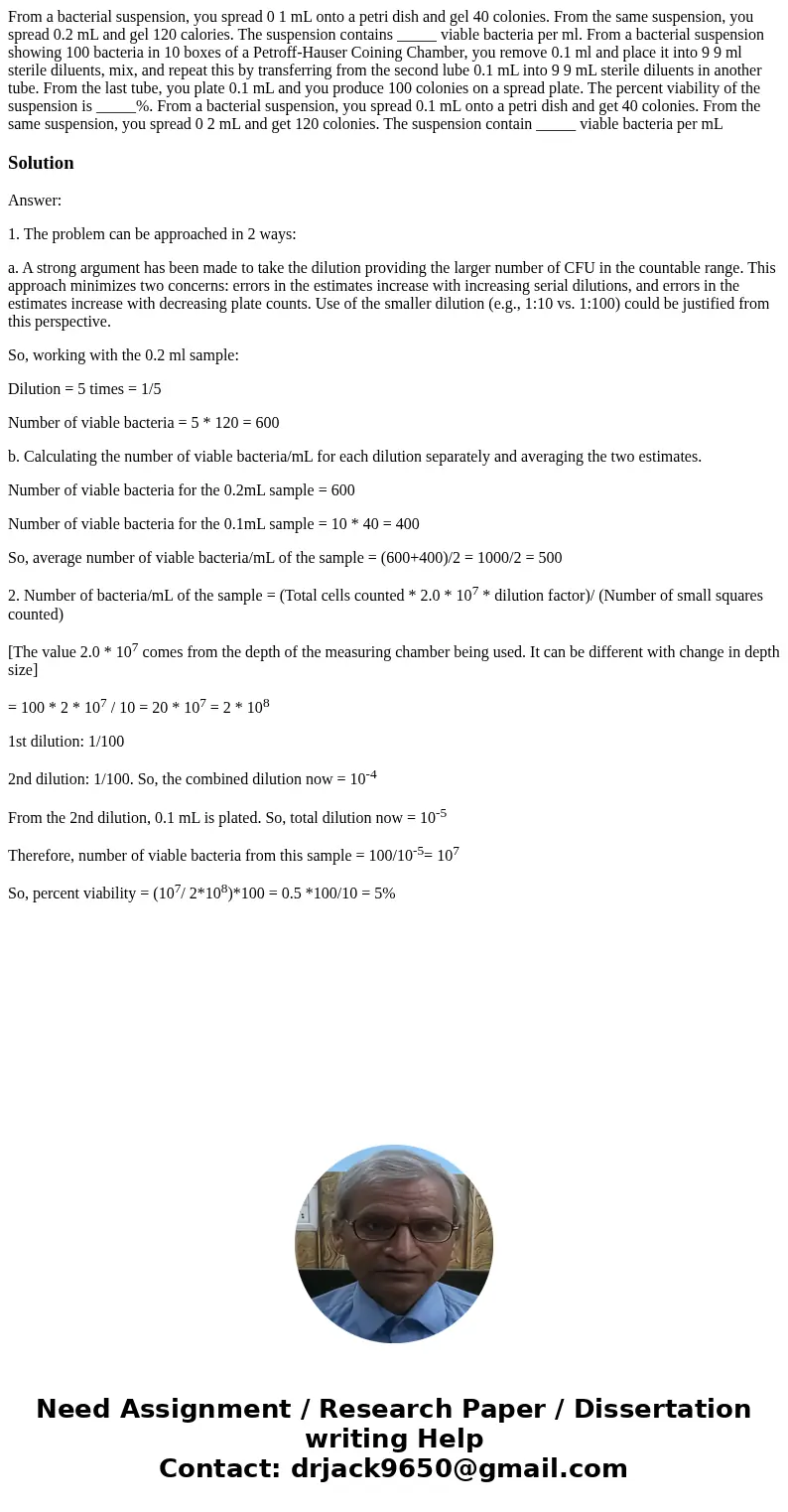From a bacterial suspension you spread 0 1 mL onto a petri d
Solution
Answer:
1. The problem can be approached in 2 ways:
a. A strong argument has been made to take the dilution providing the larger number of CFU in the countable range. This approach minimizes two concerns: errors in the estimates increase with increasing serial dilutions, and errors in the estimates increase with decreasing plate counts. Use of the smaller dilution (e.g., 1:10 vs. 1:100) could be justified from this perspective.
So, working with the 0.2 ml sample:
Dilution = 5 times = 1/5
Number of viable bacteria = 5 * 120 = 600
b. Calculating the number of viable bacteria/mL for each dilution separately and averaging the two estimates.
Number of viable bacteria for the 0.2mL sample = 600
Number of viable bacteria for the 0.1mL sample = 10 * 40 = 400
So, average number of viable bacteria/mL of the sample = (600+400)/2 = 1000/2 = 500
2. Number of bacteria/mL of the sample = (Total cells counted * 2.0 * 107 * dilution factor)/ (Number of small squares counted)
[The value 2.0 * 107 comes from the depth of the measuring chamber being used. It can be different with change in depth size]
= 100 * 2 * 107 / 10 = 20 * 107 = 2 * 108
1st dilution: 1/100
2nd dilution: 1/100. So, the combined dilution now = 10-4
From the 2nd dilution, 0.1 mL is plated. So, total dilution now = 10-5
Therefore, number of viable bacteria from this sample = 100/10-5= 107
So, percent viability = (107/ 2*108)*100 = 0.5 *100/10 = 5%

 Homework Sourse
Homework Sourse